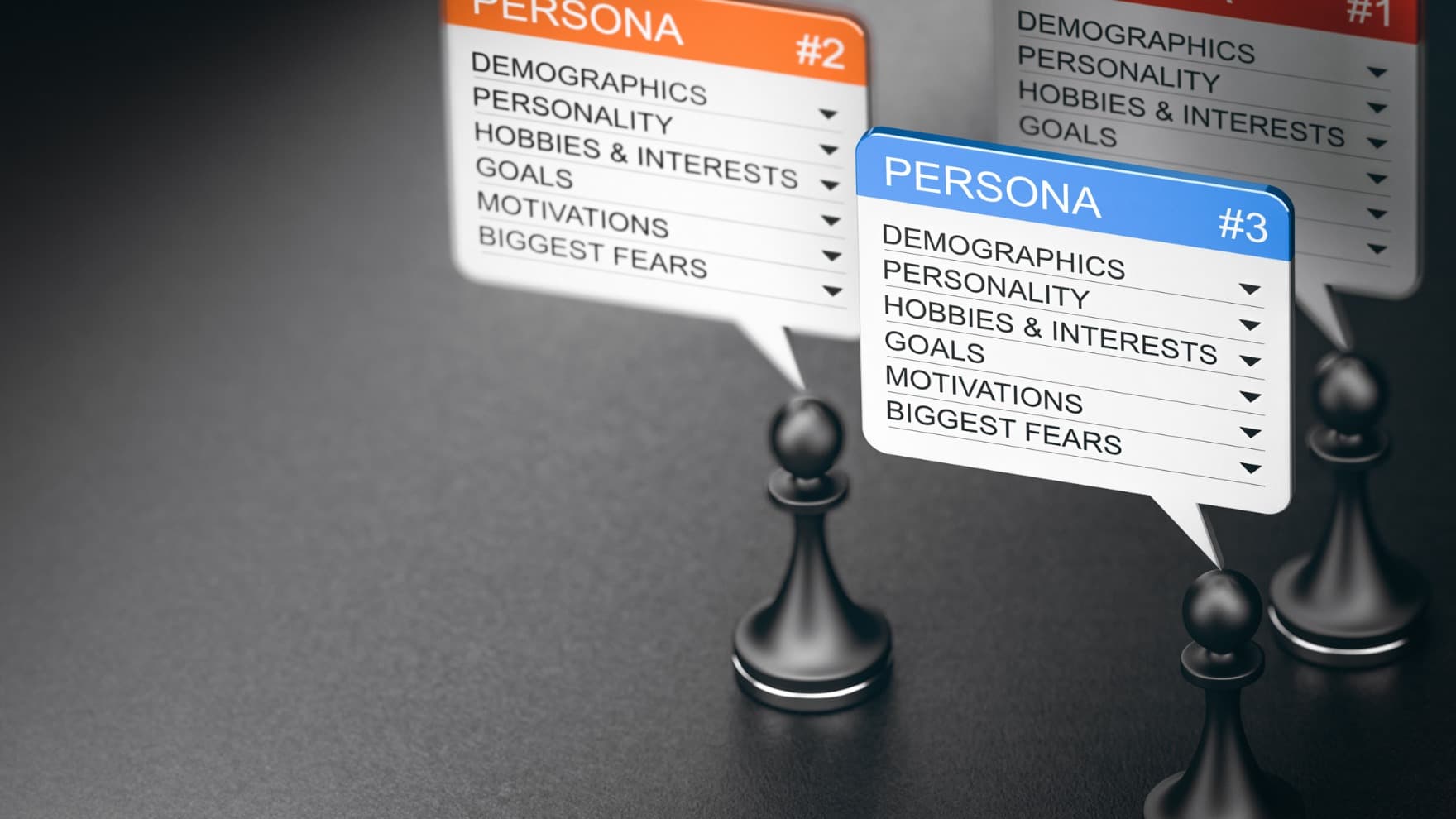Ideal Customer Profile (ICP) vs. Buyer Persona
Casey O'Connor
When it comes to successful sales, two of the most important parts of the process are the ideal customer profile (ICP) and buyer persona(s).
These profiles help marketers and salespeople identify, attract, connect with, and sell to customers who are likely to benefit from your product.
In this article, we’ll go over everything you need to know about the ideal customer profile and the buyer persona, including how to create them, the differences between them, and how they improve and accelerate the sales process.
Here’s what we’ll cover:
- What Is an Ideal Customer Profile?
- What Is a Buyer Persona?
- How Is Each Used?
- How to Create an Ideal Customer Profile or a Buyer Persona
- Using ICP in Sales Outreach
What Is an Ideal Customer Profile?
An ideal customer profile (sales ICP) is a snapshot of the type of company that represents the best fit for the product or service you sell.
In other words, the ICP is a generalized set of characteristics of the type of company that would be best served by your offer.
There are many factors that go into creating a thorough ICP. Although many of them will be unique to your company and the needs of your buyers, there are a handful of must-know criteria that are all but universal to any ICP. 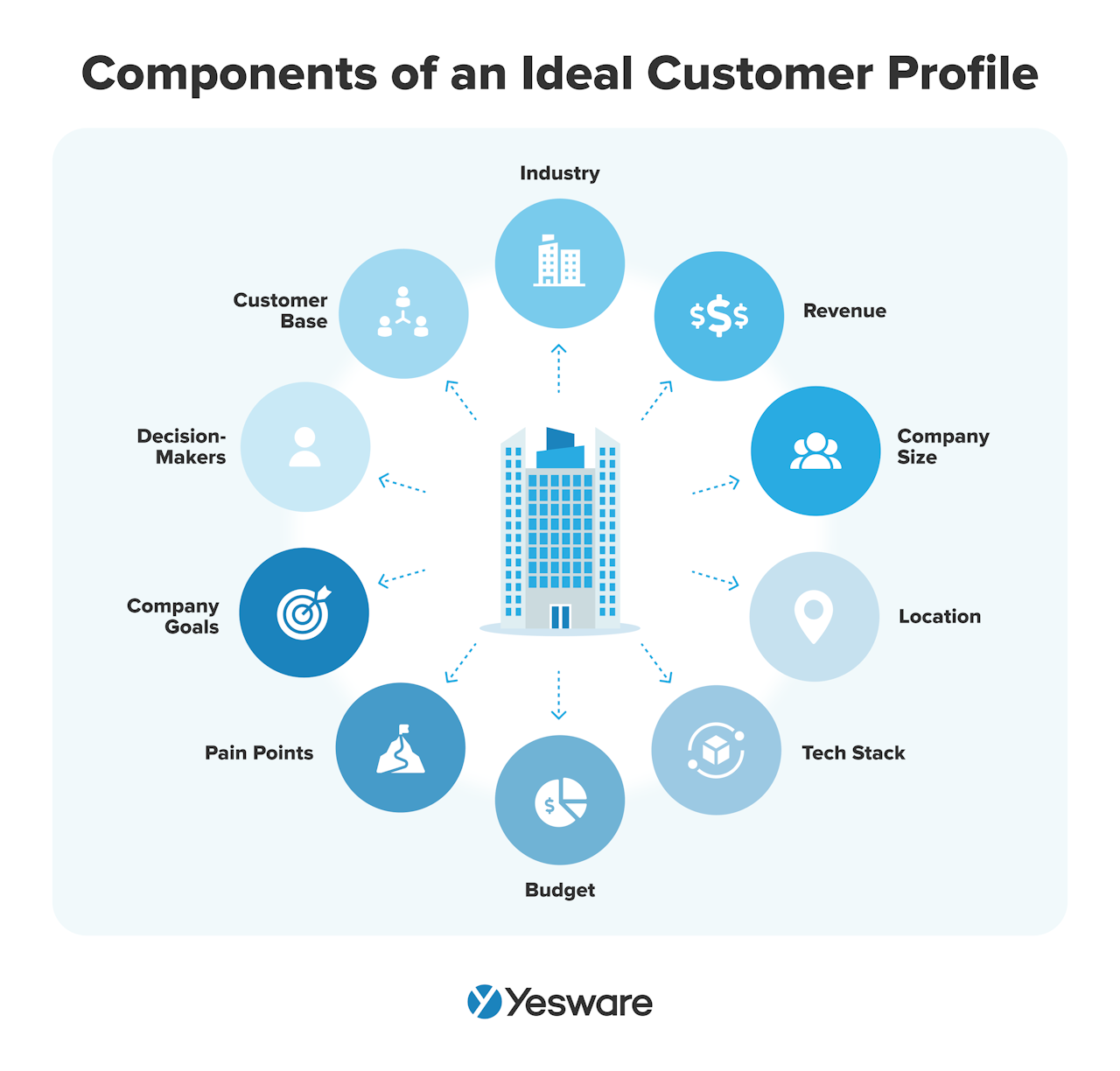 The ICP helps salespeople understand which companies are most likely to be interested in, purchase, generate success with, and refer others to your product.
The ICP helps salespeople understand which companies are most likely to be interested in, purchase, generate success with, and refer others to your product.
This insight helps sellers know who to target and how. Not only does this improve the organization’s overall sales process and close rate, but it also helps improve buyer/seller relationships by helping salespeople personalize their content and communication.
Today’s buyer makes decisions more quickly and more independently than ever before, and salespeople need to stay one step ahead of them if they want to have a productive sales conversation. Sellers can use insight from the ICP to offer value to prospects as soon as they initiate a conversation.
Remember, the ICP is a data-driven document. It needs to be backed up by research and real facts, not intuition or gut feeling.
It’s important to note that the ICP does not address the characteristics of individual decision-makers or buyers — the buyer persona covers those. The ICP deals strictly with the demographics of the overarching company.
What Is a Buyer Persona?
A buyer persona is a fictionalized representation of the people who matter most within your customer’s buying process. 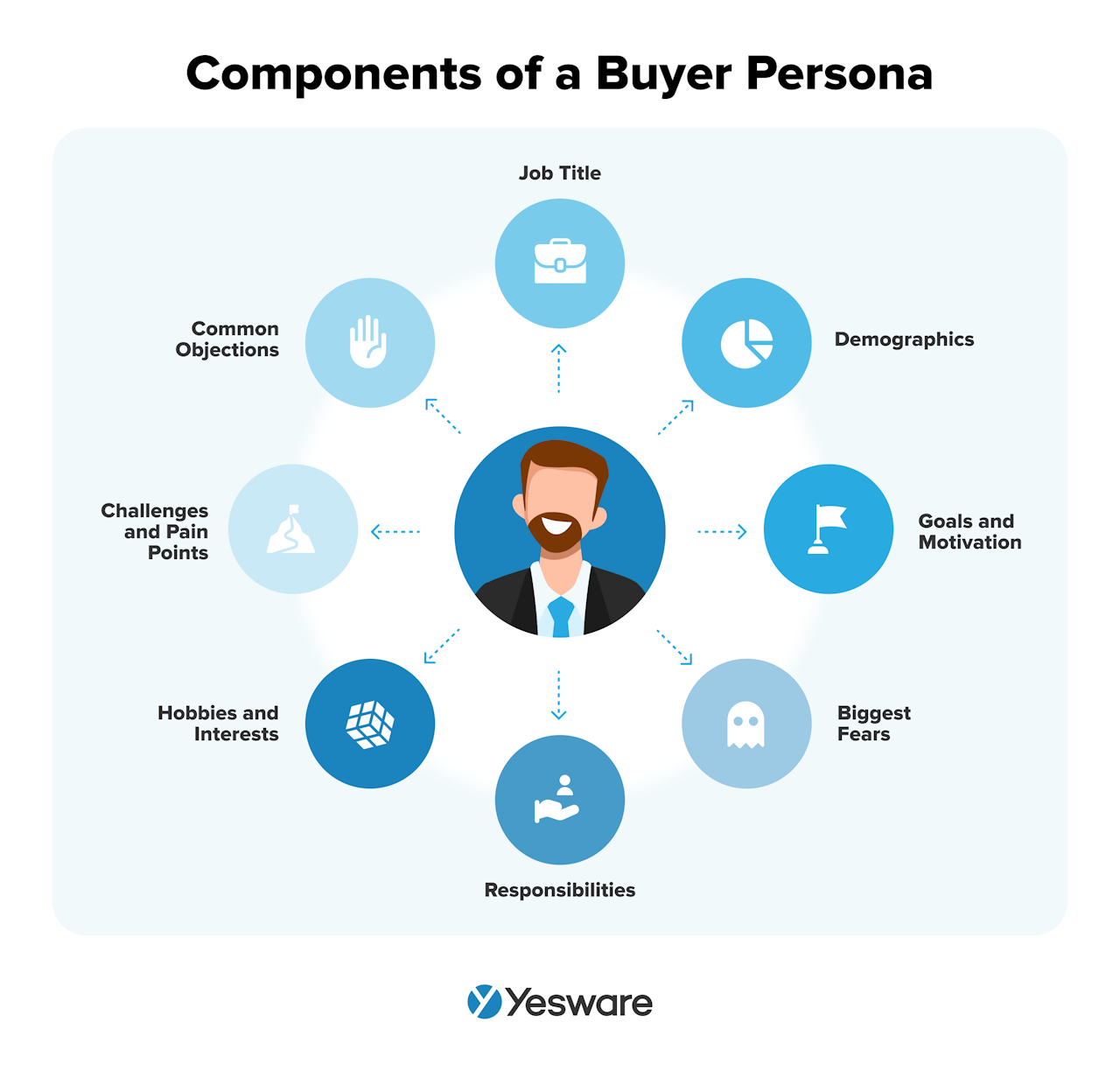 The buyer persona profile includes a variety of details about decision-makers, like:
The buyer persona profile includes a variety of details about decision-makers, like:
- Personal and professional demographics
- Professional and sometimes personal goals
- Business challenges
- Motivators and fears
- Day-to-day routines and responsibilities
The best buyer personas are built by considering how your buyers consume information and what drives their decision-making process. It’s based largely on psychological patterns and influencers.
Most companies have between two and five personas that contribute to the purchasing decision. Just like the ICP, these persona profiles should also be based on fastidious market research and customer data.
How Is Each Used?
Both the ICP and buyer personas are used in similar ways within the buying process, but there are also important distinctions between the use cases for each. 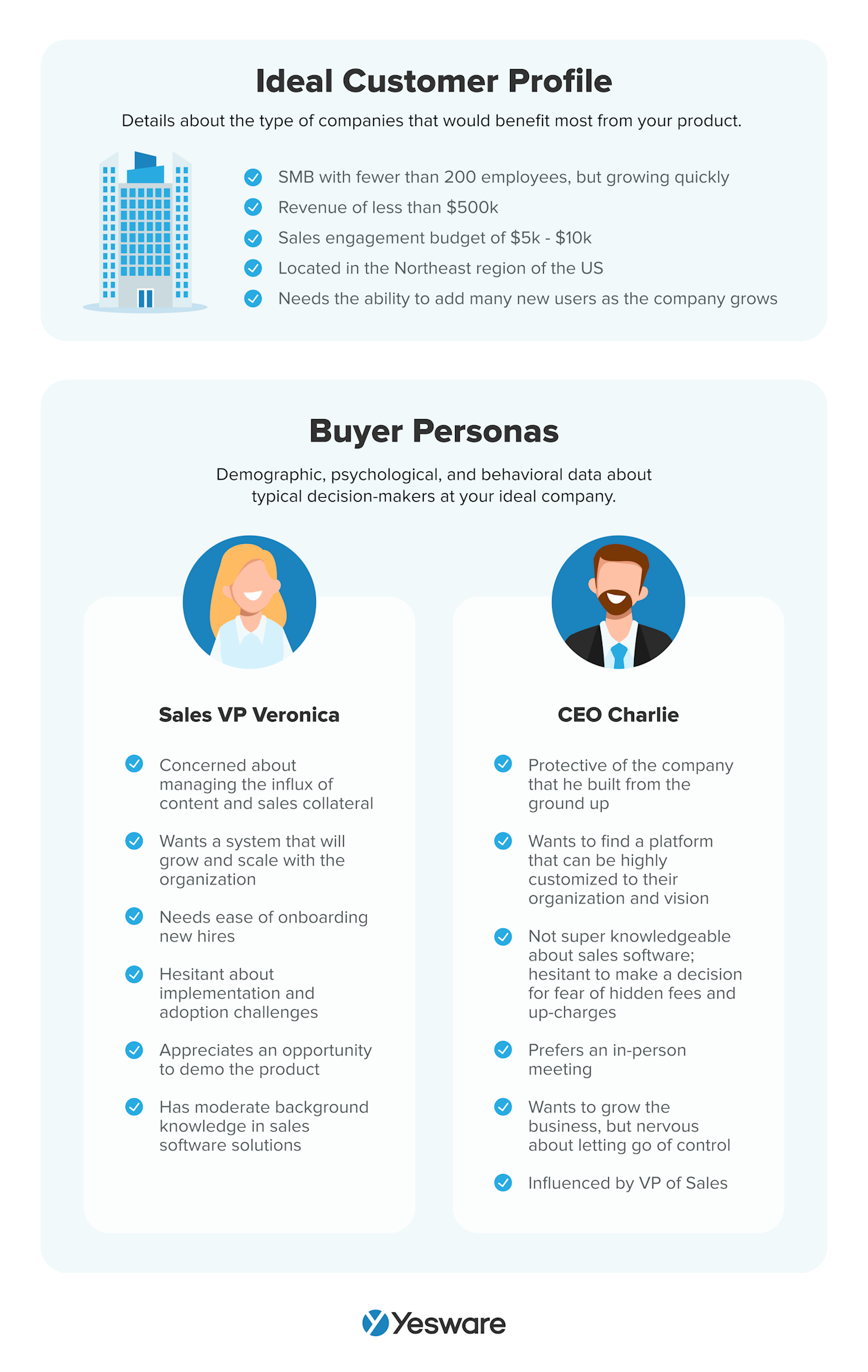 Here’s an overview of how to use the ICP and the buyer persona in the sales process.
Here’s an overview of how to use the ICP and the buyer persona in the sales process.
Ideal Customer Profile
No salesperson wants to waste their limited time talking to prospects who won’t ultimately commit.
The ICP exists to help salespeople evaluate the strength of each prospect that enters the sales pipeline, so they can decide where and how to best allocate their resources to new leads.
It also helps marketing professionals create campaigns that are most likely to attract best-fit companies from the start and helps salespeople know where to begin the conversation.
Buyer Persona
The buyer persona gets down to the details about what it means to sell to best-fit customers.
These profiles help salespeople understand exactly what makes the decision-makers tick and what moves the needle for each of them.
If the ICP is the overarching war strategy, the buyer persona represents the logistical battle plan that’s drawn up from the trenches.
Here’s one last breakdown of the differences:
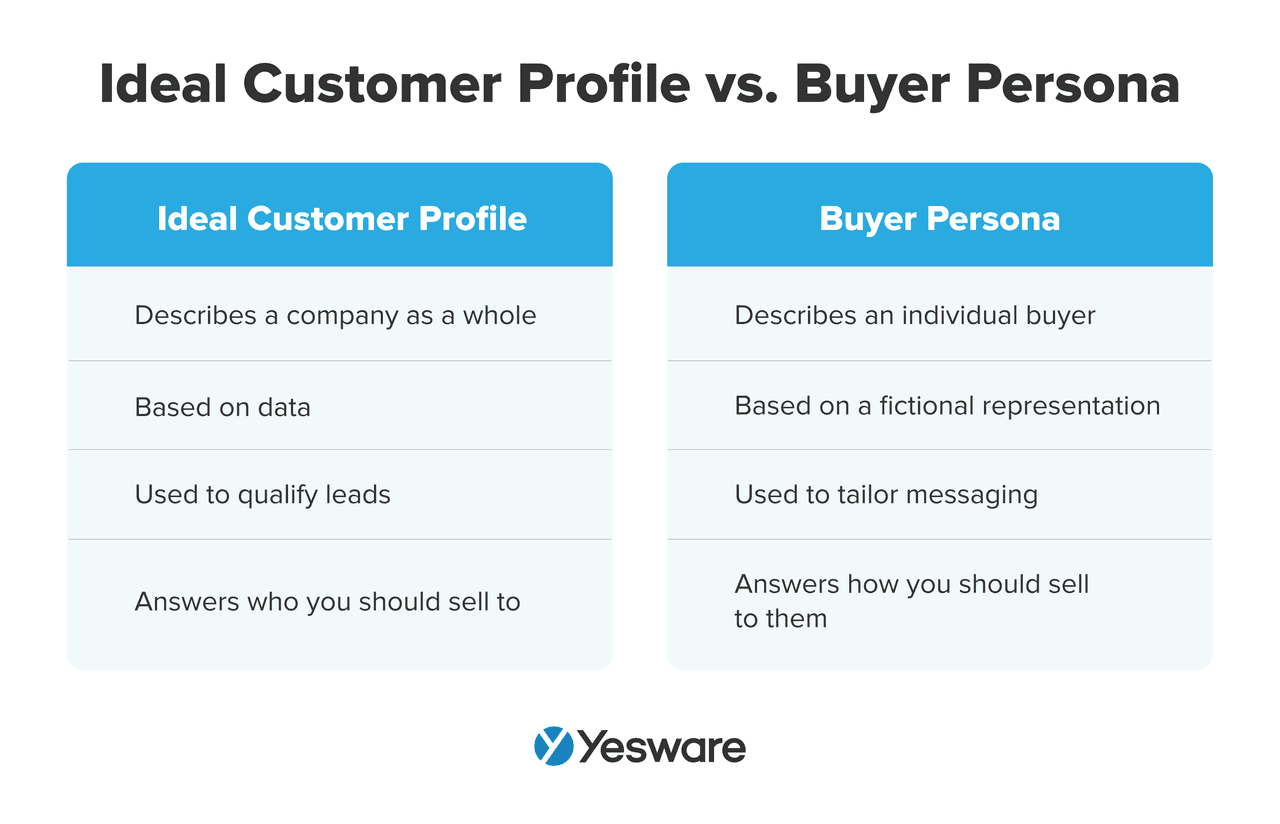
Tip: Make sure you’re reaching out to your customers in a tailored and personalized way. The guide below is filled with data-backed ways to do so.
 Sales Engagement Data Trends from 3+ Million Sales ActivitiesLooking at millions of tracked email activity over the past few years, this ebook is filled with our top studies and findings to help sales teams accelerate results.
Sales Engagement Data Trends from 3+ Million Sales ActivitiesLooking at millions of tracked email activity over the past few years, this ebook is filled with our top studies and findings to help sales teams accelerate results.
How to Create an Ideal Customer Profile or a Buyer Persona
Even for companies that are just getting off the ground, it’s relatively easy to start building an ICP or buyer personas.
Part of the reason the processes are so straightforward is that both profiles are intended to be living, breathing documents. They are meant to be reviewed, updated, and changed whenever necessary.
With that in mind, dig into your data. Start building profiles based on the information you have, and use subsequent data to optimize your profiles over time.
Identify and Research Your Best Customers
Look carefully at your current accounts to pinpoint similarities among your best customers.
Do they all have a certain number of employees? Are they all from a certain region? Do they all generate a certain range of revenue?
The specific answers to these questions are irrelevant, but the commonalities are critical. Find the things that your best customers have in common, and build your profile around them.
And, speaking of best customers — don’t assume that the biggest deals are the best customers. Sometimes whale deals are anomalies, and shouldn’t necessarily be the basis of your ICP.
Instead, look at the following criteria:
- Shortest sales cycles
- Lowest customer acquisition cost (CAC)
- Highest customer satisfaction
- Largest rate of renewals, upsells/cross-sells, and expansions
These factors are far more likely to point you toward the companies that are most likely to buy from you.
Build Your Profile
Your ICP and buyer persona should include the following information:
- Industry or field
- Number of employees
- Location
- Funding information
- Number of investors and their stake
- IPO status
All of these details will help marketers and salespeople filter among the companies that are engaged at the top of the pipeline.
Buyer personas should also include behavioral data that points to why they make decisions the way they do. They should include the buyer’s:
- Needs
- Responsiveness
- Interaction with the company to date
- Emotional connection with your brand
In a general sense, the ICP is a tool better used in the top half of the sales pipeline; the buyer persona better serves salespeople working the bottom half of it.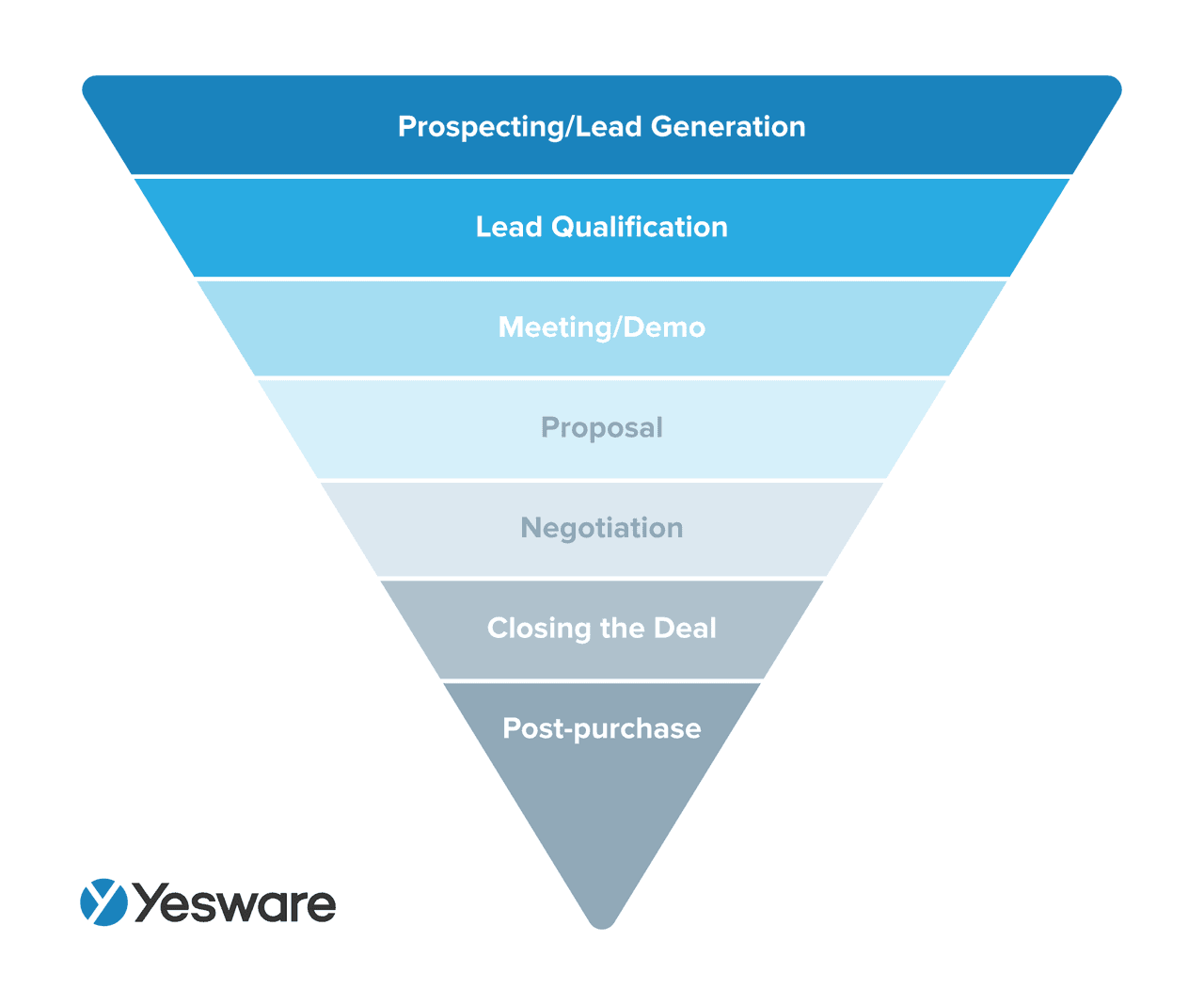
Using ICP in Sales Outreach
Your ICP helps your salespeople purposefully and strategically plan their outreach campaigns so that they’re prioritizing the leads most likely to buy.
It also helps sellers realize which prospects may need longer nurturing, which calls for a different strategy out of the gate.
Yesware can help sellers maximize the leverage gained from their ICP with our multichannel campaign feature.
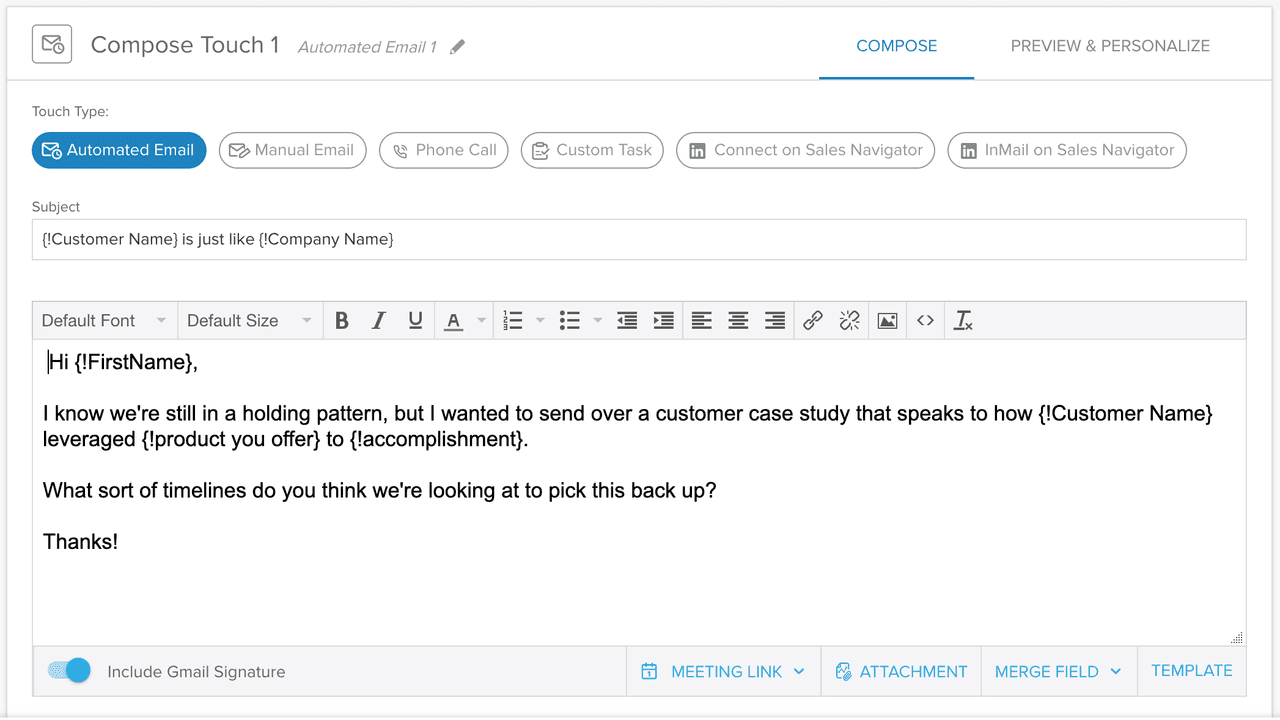
Multichannel campaigns allow salespeople to deploy several different personalized campaigns, automated at scale.
And with our email template function, salespeople can also save and automate their most effective outreach to reach virtually unlimited well-qualified prospects.
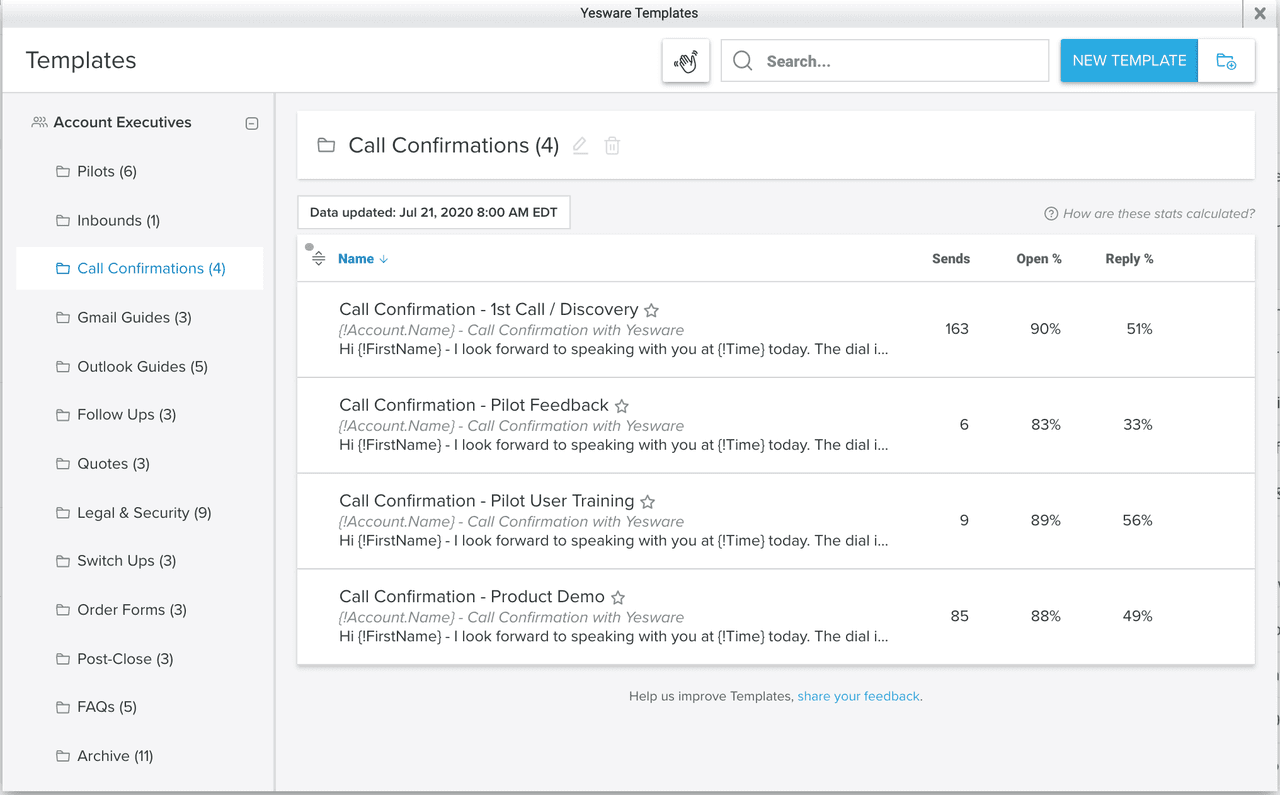
Does your company have an ICP or buyer personas? How have they improved your sales performance? Are there any updates you can make to your profiles that will propel your team forward?
Get sales tips and strategies delivered straight to your inbox.
Yesware will help you generate more sales right from your inbox. Try our Outlook add-on or Gmail Chrome extension for free, forever!
Related Articles
Casey O'Connor
Casey O'Connor
Casey O'Connor
Sales, deal management, and communication tips for your inbox
